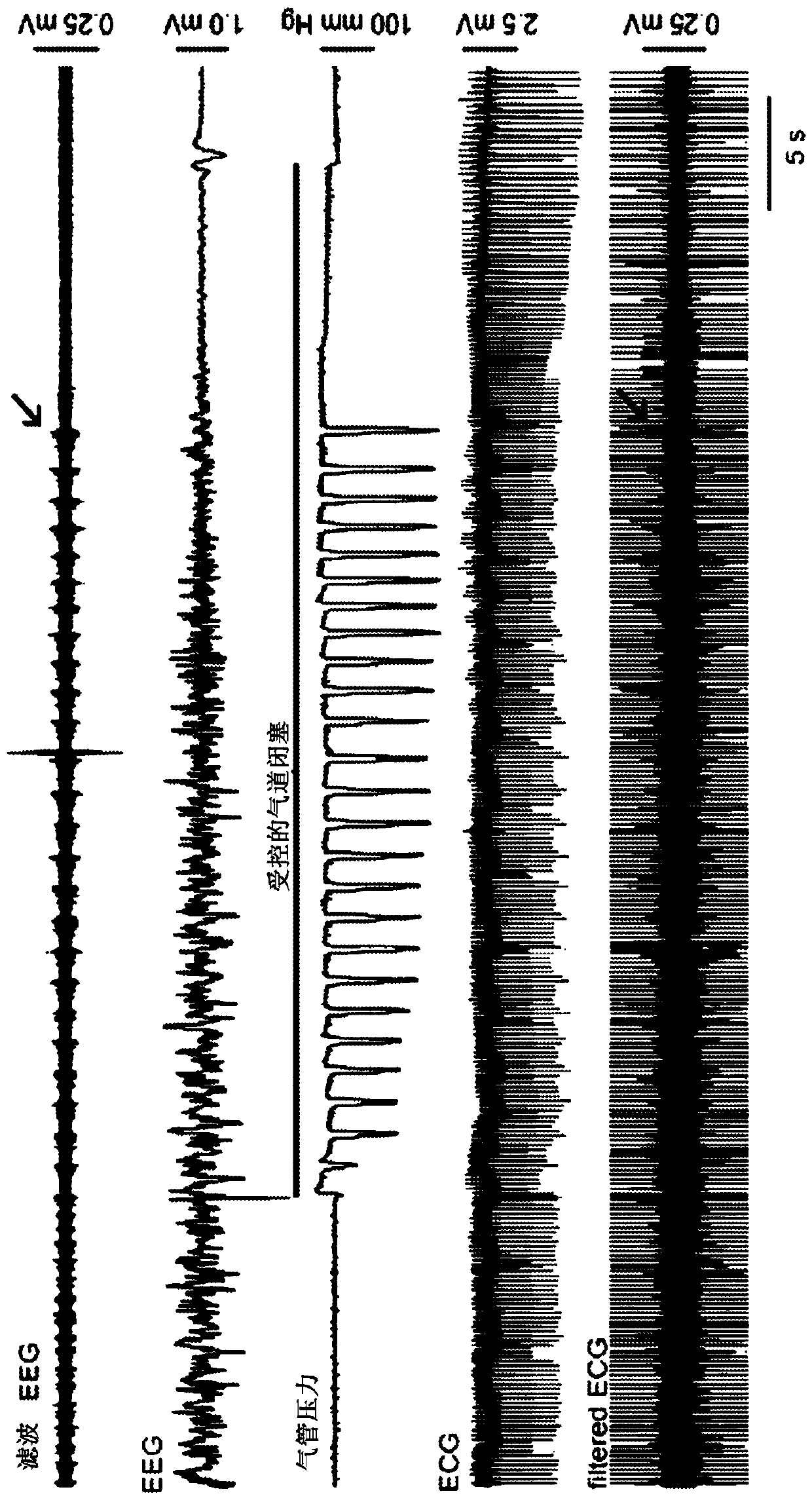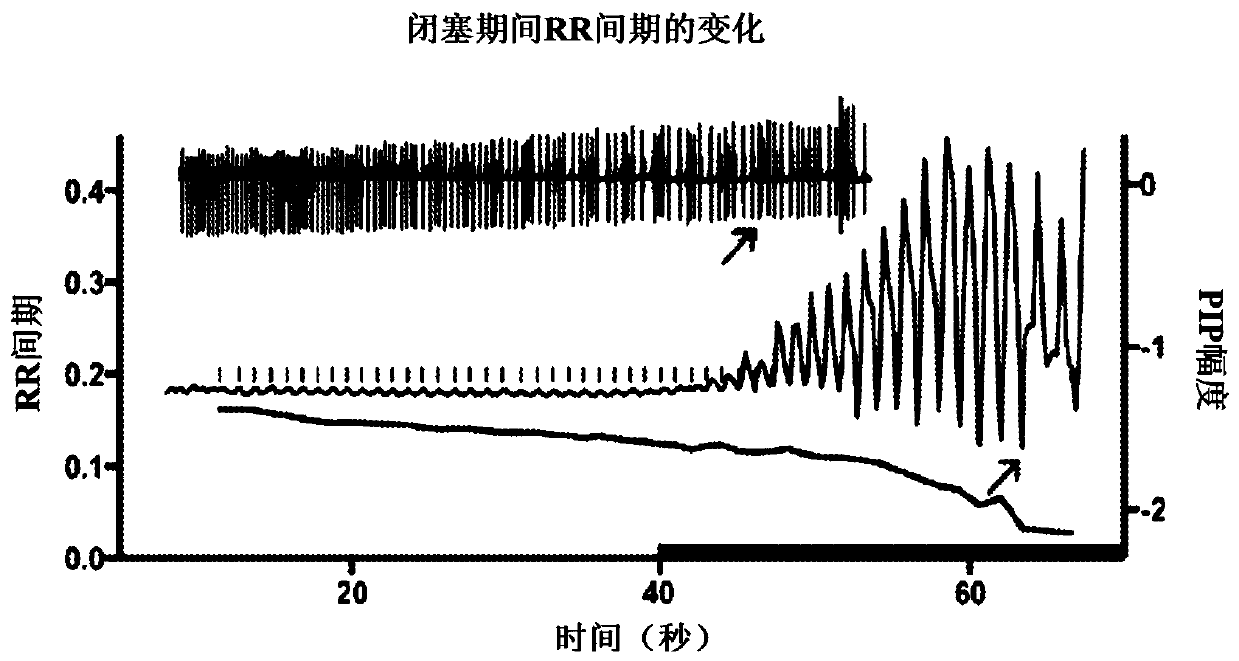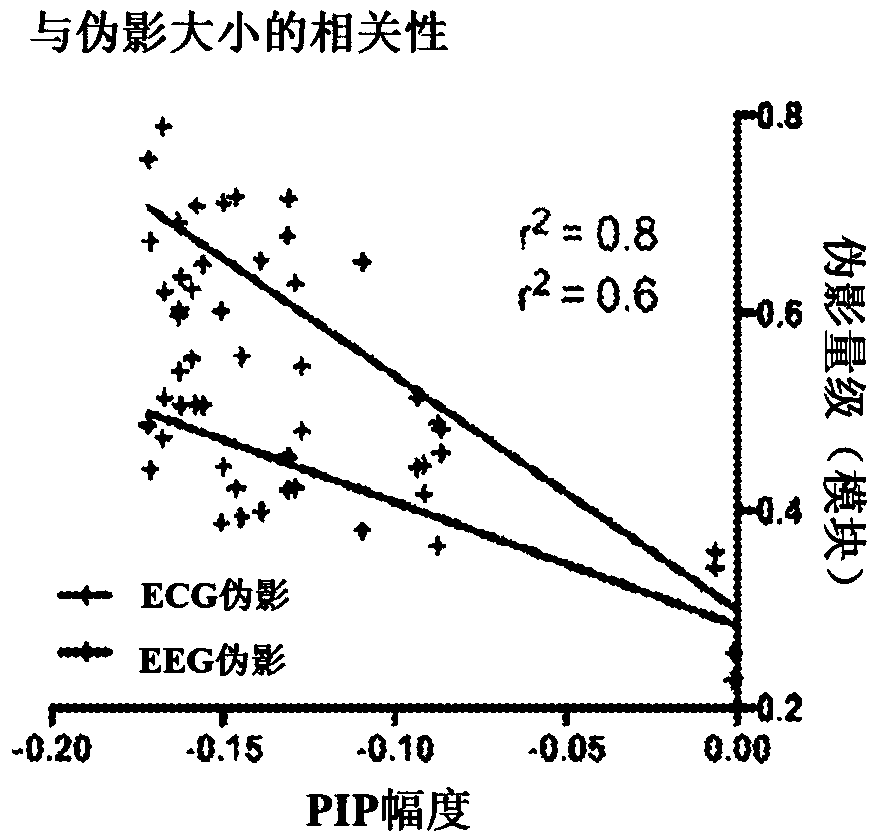System, method and biomarkers for airway obstruction
An obstructive, obstructive technology, applied in applications, diagnostic recording/measurement, medical science, etc., can solve problems such as physiological mechanisms that have not been fully resolved
- Summary
- Abstract
- Description
- Claims
- Application Information
AI Technical Summary
Problems solved by technology
Method used
Image
Examples
example 1
[0110] Parenteral kainic acid was used to induce recurrent seizures in carbamate-anesthetized Sprague Dawley rats. A combination of EEG recordings and cardiorespiratory monitoring (including video laryngoscopy). Controlled occlusion of the endotracheal tube is used to study the dynamics of cardiac and respiratory changes following sudden occlusion. Seizure activity resulted in a marked increase in RLN episodes, which was associated with abnormal high-frequency movements of the vocal cords. Partial airway obstruction due to laryngospasm was evident on plethysmography and was prevented by intubation. Complete glottic closure (confirmed by laryngoscopy) occurs in a subset of non-intubated animals, which is accompanied by a maximal increase in RLN activity and is followed within tens of seconds by ST-segment elevation, bradycardia, and death in all occlusions Stop airflow in the animal.
[0111] Central apnea of up to 33 s occurred in both intubated and non-intubated rats du...
example 2
[0123] The spread of seizure activity over the main motor nerve RLN of the larynx was studied in a set of experiments aimed at characterizing RLN activity during normal quiet breathing (baseline) and during seizures induced by kainic acid. Protect the animal from laryngospasm using a tracheal opening or a T-shaped endotracheal tube that preserves the RLN bilaterally. In animals with endotracheal tubes, periods of complete glottic closure can be studied with laryngoscopy without concern for oxygen desaturation. RLN recordings were also performed during other experiments with the aim of capturing RLN activity during specific events such as central and obstructive apneas. EEG, multi-unit RLN activity and ECG were recorded in all animals. Laryngoscopy was performed at intervals during the experiment.
[0124] In the second set of experiments, the effect of laryngospasm and seizure activity on ventilation was assessed by body plethysmography. A group of animals was intubated wit...
example 3
[0151] Figure 10 Shown are the results of a pilot human trial showing the use of Biomarker 1 (increased peak-to-peak amplitude of ECG-recorded background activity due to increased pectoral muscle EMG contained in the ECG signal) to detect obstructive respiration pause. Preliminary human subject data show that Biomarker 1 occurs in a simple setting where a patient attempts to inhale by drawing air from a closed 500ml container. During inspiratory effort, there was a significant increase in ECG background amplitude relative to QRS amplitude (simple ratio of the peak-to-peak amplitude of the peak-to-peak ECG signal to the QRS complex).
[0152] This suggests that Biomarker 1 has utility in any condition that can increase EMG associated with inspiratory effort.
[0153] exist Figure 10 , a statistical analysis of the results is shown:
[0154] ANOVA: F(1.487,43.13)=22.42P<0.0001
[0155] Multiple comparisons:
[0156] Before and during, p=0.0001
[0157] Before vs After, ...
PUM
 Login to View More
Login to View More Abstract
Description
Claims
Application Information
 Login to View More
Login to View More - R&D
- Intellectual Property
- Life Sciences
- Materials
- Tech Scout
- Unparalleled Data Quality
- Higher Quality Content
- 60% Fewer Hallucinations
Browse by: Latest US Patents, China's latest patents, Technical Efficacy Thesaurus, Application Domain, Technology Topic, Popular Technical Reports.
© 2025 PatSnap. All rights reserved.Legal|Privacy policy|Modern Slavery Act Transparency Statement|Sitemap|About US| Contact US: help@patsnap.com



